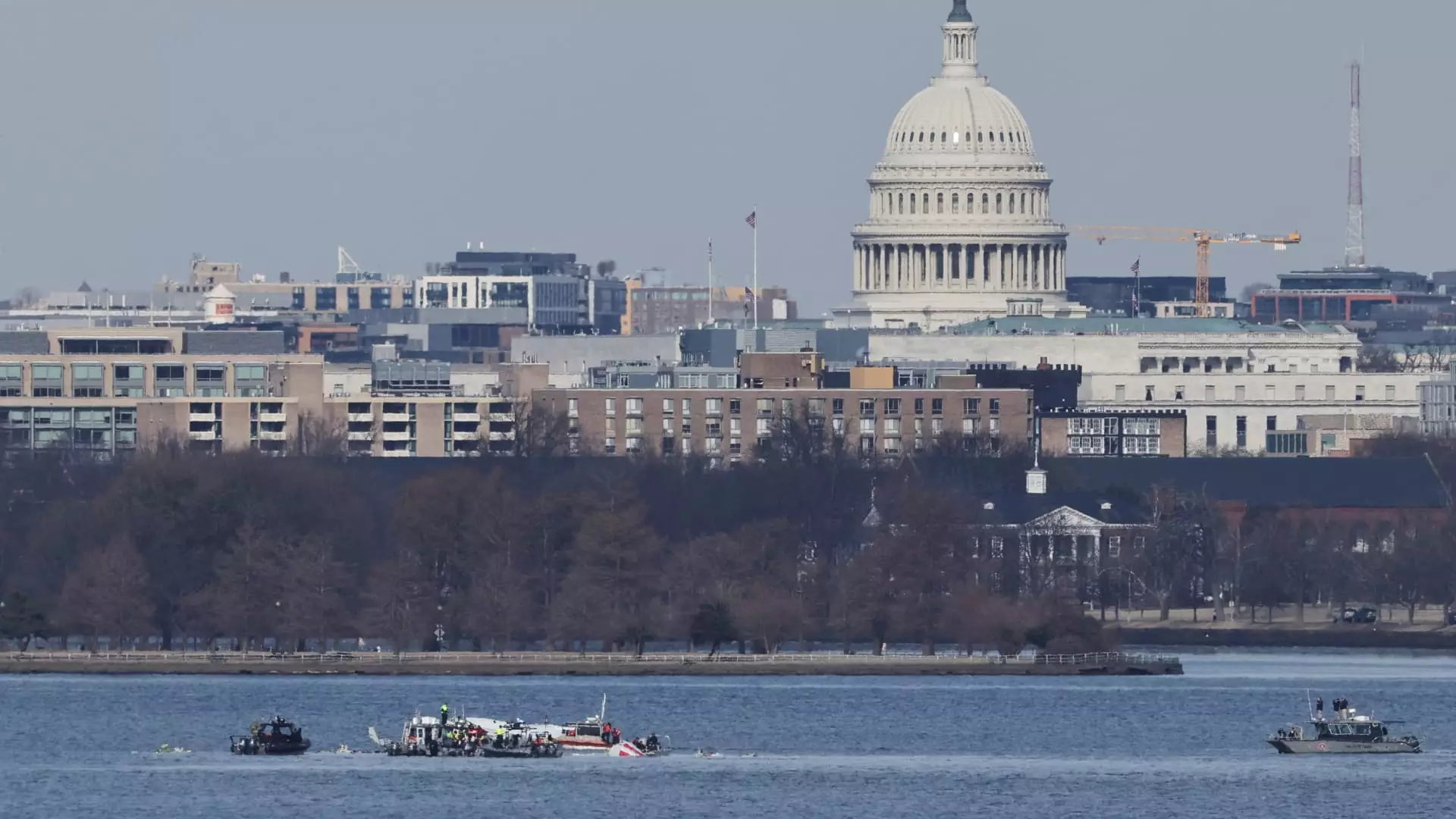On a fateful Wednesday evening, the skies over Washington D.C. became the backdrop for one of the deadliest aviation disasters in recent American history. The catastrophic collision involved a military Black Hawk helicopter and an American Airlines regional jet, resulting in the tragic loss of 67 lives, including all 64 occupants of American Airlines Flight 5342 and the three military personnel on board the helicopter. This collision, which occurred just before 9 p.m. ET near Reagan National Airport, sparked immediate outrage and concern, highlighting critical issues surrounding aviation safety protocols and airspace management.
According to preliminary reports, the American Airlines flight was on its final approach to Reagan National Airport when the disaster unfolded. Operating at an altitude of approximately 300 feet, the Bombardier CRJ-700 was nearing its designated runway when it collided with the Black Hawk, which is reported to have been engaged in a routine proficiency training flight for military personnel. This raises pressing questions about the altitude levels maintained by the helicopter—an area of intense scrutiny given Federal Aviation Administration (FAA) regulations that stipulate that helicopters in the vicinity of the airport must fly at a maximum altitude of 200 feet.
In a briefing, National Transportation Safety Board (NTSB) member Todd Inman elaborated on the complexity of air traffic management in metropolitan D.C. He noted that the region has defined helicopter tracks that are meant to offer structured guidelines for flight maneuvers. However, the tragic incident calls into question whether these protocols were effectively followed in this instance.
The NTSB is spearheading a thorough investigation into the variables contributing to the collision, focusing on flight data and cockpit voice recordings retrieved from the crashed aircraft. NTSB Chair Jennifer Homendy emphasized the importance of diligence in analyzing the extensive amount of data collected. This meticulous approach underscores the gravity of the situation and serves as a reminder of past lessons learned in aviation safety.
Compounding the severity of the situation is the fact that this accident marks the end of a notable period in U.S. aviation history—15 years without a fatal commercial airline crash. The increased passenger traffic, which has surged by more than 25% since the last fatal incident in 2009, brings additional challenges to air traffic management systems that must evolve to ensure safety.
In response to the harrowing crash, the FAA swiftly introduced new flight restrictions for helicopter operations around D.C. and near Reagan National Airport. These restrictions aim to bolster safety protocols and prevent future occurrences of such a disaster. Specifically, pilots are now required to adhere to more stringent altitude limits and operational zones.
As an air traffic control specialist elucidated, the busy airspace above D.C. presents a daunting challenge, with multiple aircraft operations converging in a limited geographical area. Historically, the staffing levels during peak periods at Reagan National Airport are supposed to account for the volume of traffic, and yet reports indicate that staffing at the tower during the time of the accident met some alarming irregularities.
In the wake of the tragedy, significant political scrutiny emerged, with officials calling for a reassessment of air traffic management systems and safety protocols. Defense Secretary Pete Hegseth mentioned at a White House briefing that “a mistake was made,” alluding to possible procedural failures in altitude compliance by the helicopter. This acknowledgment of an “elevation issue” amplifies concerns regarding accountability and the effectiveness of existing safety measures.
Moreover, President Trump’s comments on social media criticized the helicopter’s operations, suggesting it was flying well above the FAA-mandated flight path. Such statements inevitably contribute to a growing narrative demanding transparency and reform in aviation safety administration.
As investigators continue to delve deeper into the circumstances surrounding this tragic collision, it is imperative for aviation authorities, military officials, and lawmakers to address the findings with urgency. From refining altitude compliance guidelines to enhancing air traffic control staffing protocols, each layer of this investigation presents an opportunity for reform that could prevent similar catastrophes in the future.
The crash over the Potomac serves as a somber reminder of the fragility of human life amid the complexities of modern aviation. Humanity thrives on progress, and with progress often comes the risk of calamity; thus, the aviation industry must remain steadfast in its commitment to safety, ensuring that such a tragedy never occurs again.

Leave a Reply